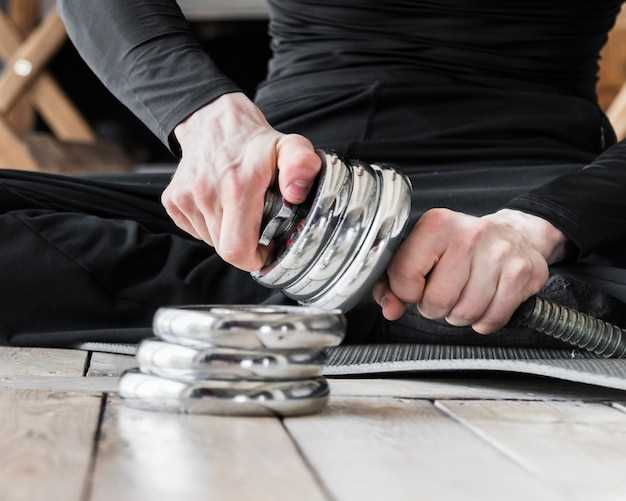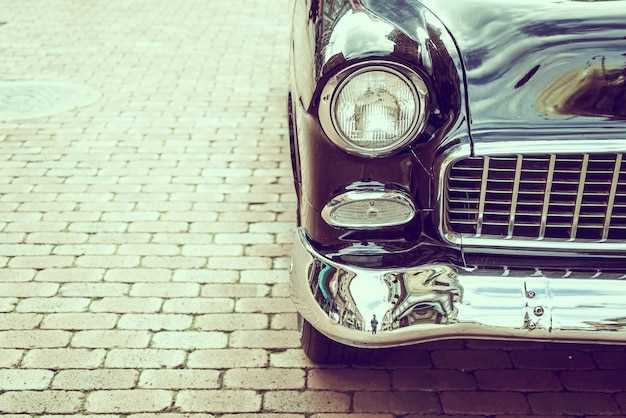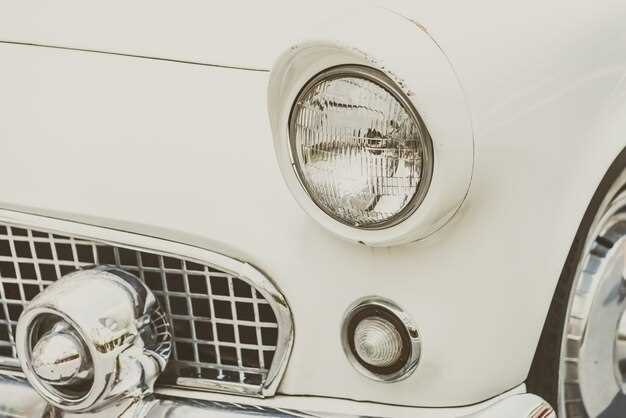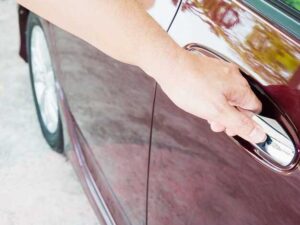Regular maintenance is the foundation of preserving your classic car’s market value. Schedule routine check-ups with a reputable mechanic familiar with vintage vehicles. This ensures that any potential issues are addressed before they become costly repairs. Keep meticulous records of all maintenance and repairs, as potential buyers will appreciate the transparency and care you’ve invested in the vehicle.
Protect your car’s exterior by storing it in a climate-controlled garage. Extreme temperatures and humidity can cause rust and wear on the paint and components. Consider using a breathable car cover for added protection against dust and debris when the vehicle is not in use. Regularly wash and wax the exterior to maintain its shine and prevent deterioration.
Documentation also plays a key role in maintaining value. Collect and preserve manuals, original parts, and receipts. This not only adds authenticity but also builds trust with future buyers. Consider joining classic car clubs or online forums to connect with other enthusiasts. Networking can provide valuable insights and help you stay informed about the classic car market.
If you decide to make modifications, choose upgrades that enhance the car’s performance or aesthetics without straying too far from its original specifications. Keep all original parts, as they can significantly boost the value of the car. Striking the right balance between personalization and preservation is key to maximizing your classic car’s appeal in the market.
Regular Maintenance Routines to Uphold Performance
Check your fluids regularly. Monitor oil, coolant, brake fluid, and transmission fluid levels. Changing the oil every 3,000 to 5,000 miles keeps the engine healthy and performance optimal. Use the manufacturer’s specifications for the right oil type.
Inspect the tires monthly. Gauge tire pressure, and check for uneven wear. Rotate tires every 6,000 to 8,000 miles to promote even tread life. Proper alignment reduces vibration and enhances handling.
Examine the battery connection and charge status consistently. Clean terminals to prevent corrosion, and replace the battery every 3 to 5 years. A well-maintained battery enhances starting efficiency.
Regularly assess the brake system. Listen for unusual noises when applying brakes. Replace pads when worn and flush brake fluid according to the manufacturer’s recommendations to maintain responsiveness.
Inspect belts and hoses every six months. Look for cracks, fraying, or leaks. Replacing these components proactively avoids breakdowns and extends engine life.
Don’t forget the spark plugs. Replace them according to the service interval in your owner’s manual to ensure smooth starts and efficient fuel consumption.
Wash and wax your car frequently. Cleaning removes contaminants that can damage the paint and finish. Waxing creates a protective layer, maintaining the aesthetic appeal and market value.
Keep a maintenance log. Documenting service dates and details shows potential buyers that you care for the vehicle. This record can enhance its value when it’s time to sell.
Choosing the Right Storage Environment for Longevity
Select a climate-controlled space to maintain consistent temperature and humidity levels. This prevents rust, mildew, and deterioration of interior materials. Aim for a temperature range of 60-75°F and humidity levels between 30-50%.
Utilize a clean, dry garage or a dedicated storage unit. Avoid outdoor storage, as exposure to elements accelerates wear. If using a garage, keep it organized and free from chemicals that could harm your car.
Ensure the storage area is well-ventilated. Stale air can lead to mold growth and unpleasant odors. If possible, install exhaust fans or open windows periodically to promote airflow.
Invest in a high-quality car cover. Choose one that breathes while protecting against dust and scratches. Avoid using non-breathable materials, which can trap moisture and promote rust.
Place your classic car on jack stands or wheel cradles to prevent tire flat spots. This also keeps suspension components from settling and deforming over time.
Keep the fuel tank full to avoid moisture buildup inside. Adding a fuel stabilizer can further protect the engine from damage during long storage periods.
Regularly inspect the storage environment for any signs of leaks, pests, or mold. Early detection of issues allows for prompt resolution and safeguards your vehicle.
Lastly, maintain a detailed log of your car’s condition during storage. Document any maintenance performed and schedule routine checks to ensure your classic remains in peak shape.
Utilizing Quality Parts for Repair and Restoration
Invest in original or high-quality reproduction parts to maintain your classic car’s authenticity and performance. Sourcing components from reputable manufacturers ensures durability and a longer lifespan. For example, consider using OEM (Original Equipment Manufacturer) parts whenever possible, as these are designed specifically for your vehicle model.
Research specialty retailers and online platforms dedicated to classic cars. They often carry parts that are difficult to find elsewhere, including rare trim pieces or engine components. Building relationships with these suppliers can also provide you with access to expert advice and recommendations tailored to your car.
When restoring, avoid generic or substandard parts. They may seem cost-effective initially but can lead to bigger issues down the road, ultimately decreasing your car’s value. Conduct a thorough inspection of any used parts you plan to use. Look for cracks, rust, and signs of wear that could compromise performance and safety.
Document all repairs and restorations performed on your vehicle, including receipts for quality parts. This record helps demonstrate the care you’ve taken, enhancing the car’s appeal to potential buyers or collectors. Keeping a detailed history increases your classic car’s market value significantly.
Investing time and resources into using quality parts not only preserves your car’s original charm but also contributes to a smoother and safer driving experience. Focus on precision and quality, and your classic car will stand the test of time.
Documenting Service History for Enhanced Credibility
Maintain a detailed log of all service and maintenance performed on your classic car. Include dates, mileage, and specific work completed, such as oil changes, tire rotations, and major repairs. This log acts as a transparent record for potential buyers, increasing their confidence in the vehicle’s condition.
Collect all invoices and receipts related to the servicing. This documentation serves as proof of the maintenance performed and can validate any claims you make about the car’s history. Make sure to organize these documents chronologically to present a clear timeline of care.
If possible, obtain documentation from previous owners. This can further enrich the service history, showing a lineage of proper upkeep. If your vehicle participated in any car shows or meets, include those records as well, illustrating the car’s involvement in the classic car community.
Consider using a digital platform to store and share this information. Cloud-based solutions allow easy access to your service history, making it convenient to provide this data to potential buyers during the sales process.
Regular updates to the service log, especially after significant repairs or maintenance, keep it current and reliable. Transparency in your records demonstrates responsibility and enhances your car’s market value.
Understanding Market Trends for Strategic Selling
Monitor sales data and auction results for classic cars in your target market. This helps you identify which models and years are seeing increased demand and higher prices. Analyze the performance of similar vehicles to gauge buyer interest and potential pricing.
Use online marketplaces and collector forums to assess current trends. Joining these communities can offer insight into what buyers are looking for, common restoration projects, and modifications that add value. Pay attention to popularity cycles; certain makes and models might spike in interest due to movie features or nostalgic events.
Timing your sale strategically can maximize value. Track seasonal patterns; spring and summer typically see a rise in sales, as collectors emerge from winter storage. Keep an eye on economic indicators that can affect discretionary spending. A growing economy usually increases buyer confidence and willingness to invest in classic cars.
Be aware that market values can be influenced by rarity and condition. Limited production models or those with unique histories often fetch higher prices. Maintain detailed records of your car’s restoration or maintenance, as proof of care can reassure potential buyers of its value. Regular inspections and certification by recognized authorities can enhance trust and interest.
| Market Influencers | Impact on Value |
|---|---|
| Model Popularity | Higher demand increases value |
| Condition | Well-maintained cars yield better prices |
| Rarity | Limited editions bring premium prices |
| Economic Climate | Strong economy boosts buyer confidence |
| Seasonality | Higher sales in warmer months |
Stay connected with classic car shows and auctions. Networking can provide leads on potential buyers and help you gain insights into pricing norms. Engaging with other collectors not only broadens your understanding but may also open up selling opportunities. By aligning with these trends and insights, you can position your classic car for a successful sale.
Participating in Classic Car Communities for Networking
Join local and online classic car communities to build valuable connections. Networking with fellow enthusiasts can enhance your knowledge and potentially increase your car’s market value. Start with these actions:
- Attend Local Car Shows: Engage with other classic car lovers and experts. Show off your vehicle and listen to feedback. Make a habit of conversing with other participants to exchange insights and tips.
- Participate in Online Forums: Websites dedicated to classic cars offer discussion boards where you can ask questions and share experiences. Contributing to these forums helps establish your presence and expertise in the community.
- Join Social Media Groups: Platforms like Facebook and Instagram host various groups focused on classic cars. Participate actively, share photos, and learn from others’ experiences. This also opens opportunities to buy or sell vehicles through trusted members.
- Volunteer for Car Events: Many communities host charity car shows or local events. Getting involved provides networking opportunities while showcasing your commitment to the hobby.
- Attend Workshops and Seminars: Local mechanics or enthusiasts often hold workshops on maintenance and restoration. Engaging in these sessions expands your technical knowledge and connects you with industry experts.
Maintain these connections by sharing updates about your car and staying engaged with the community. Regular communication fosters relationships that may lead to valuable resources and insights on maintaining your classic car’s value.






